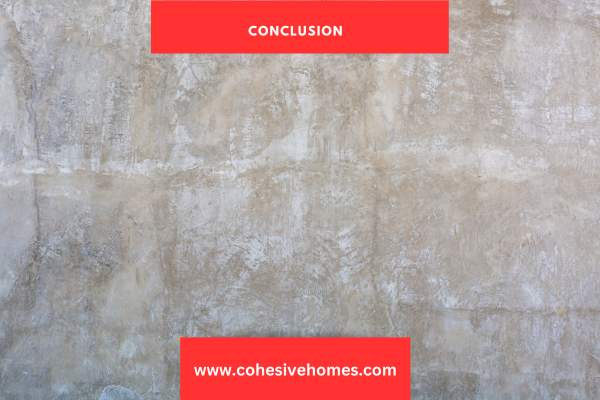If you’re wondering whether you can sand lath and plaster, then the answer is yes—you certainly can. However, just because you’re technically allowed to sand lath and plaster doesn’t mean it’s always the best idea. It’s important to understand how and why you should approach sanding lath and plaster so that you can ensure a smooth, professional-looking finish.
If you aren’t familiar with lath and plaster, it’s basically a type of wall covering made up of wooden strips (laths) crisscrossed one another, with wet plaster applied between the laths. It was commonly used as a wall covering before drywall became popular in the late 1940s and early 1950s.
Now that we’ve got an understanding of what lath and plaster are, let’s discuss when it makes sense to sand this type of wall covering. In this article, we’ll go over why, when, and how to sand lath and plaster for optimal results.
Introduction to Lath and Plaster

Have you ever wondered what lath and plaster are, and if you can sand them? Well, lath and plaster have been around for generations and have provided a dependable wall covering.
It’s a two-part building product that is composed of strips of lath that are then covered with a layer of plaster.
The traditional way to finish the lath and plaster is to sand it.
Although modern drywall construction has largely replaced this traditional method, there are still many older homes that may require maintenance or renovation on their existing lath and plaster walls.
If you do need to sand them, there are some things to keep in mind.
For starters, sanding lath and plaster requires special tools, such as an oscillating sander or an orbital sander.
You’ll also need to make sure the environment is dust-free by using drop cloths, fans, or air purifiers while you work.
For a smooth finish without gouges in the plaster, use medium-grit sandpaper before coating with primer and paint.
And always wear protective gear such as goggles and dust masks when you’re working with dust particles in an enclosed space.
Benefits of Sanded Lath and Plaster

Sanded lath and plaster are becoming more popular for walls and ceilings, as they offer some unique benefits.
First, sanded lath and plaster are incredibly durable and long-lasting. When properly installed, sanded lath and plaster can last up to a century or longer without requiring any major repairs.
This makes it a great option for anyone looking for a wall or ceiling that will last.
Second, sanded lath and plaster provide superior insulation value compared to other traditional materials like drywall or wood paneling.
This makes it ideal for homes in cooler climates, as it can help reduce energy costs in the winter by keeping heat inside the home.
Lastly, sanded lath and plaster create a much smoother surface than other materials, making it an ideal choice for anyone looking for a finished look.
What Is Involved in Sanding Lath and Plaster

Yes, you can definitely sand lath and plaster. But it’s important to understand what you’re getting into, first.
Safety
The most important thing to consider is safety. Although plaster is non-flammable, it’s also very dusty, so you absolutely have to wear a face mask and use protective eyewear while sanding.
Ensure that you ventilate your work area properly by opening all the windows before beginning your work.
Equipment
You’ll need the right equipment for the job: a power sander with fine-grit sandpaper is best for smoothing walls and ceilings.
You can also use a hand-held sanding block if you don’t have a power sander—just make sure it’s fitted with the right attachment (like a sponge or mesh) so that you don’t damage the surface of the wall or ceiling.
Finally, reach out to an expert if you’re uncertain about doing this on your own.
Sanding lath and plaster isn’t always an easy job, but it can be done when you take the proper precautions and follow best practices for safety and equipment usage. Good luck!
Tools Needed for Sanding Lath and Plaster

You might be wondering—what tools do you need for sanding lath and plaster?
The answer is simple: you need an orbital sander and some sandpaper.
The orbital sander is the most powerful tool, as it can sand large areas quickly and give you a smoother finish.
You should also consider investing in some masks, goggles, and gloves to protect yourself from the dust created by the sanding process.
If you are concerned about doing too much damage or creating ripples in the plaster surface, use a damp sponge or a manual hand-sanding block instead of the orbital sander.
This will help you get finer control over your sanding while avoiding any potential damage to the surface.
Whatever tool you choose, make sure to work in small sections, using appropriate pressure, and focusing on getting an even finish throughout.
Once you have finished sanding, it’s important to clean up all traces of dust before moving on to painting or staining your walls—this will ensure that the finish looks smooth and polished when complete.
Vacuuming or sweeping with a dry brush is usually enough for removing dust particles from surfaces like wood furniture, but for lath and plaster walls, use a damp cloth or mop for better results.
Tips for Sanding Lath and Plaster

Yes, you can sand lath and plaster. It is a time-consuming and tedious job that requires patience and the right tools.
With a few helpful tips, you can make the task simpler and more efficient.
First and foremost, make sure you wear safety goggles and dust masks when sanding any plaster surface.
Also, be sure to vacate the area before starting to minimize any dusts or particles in the air.
It is also important to avoid over-sanding or sanding too deeply into the plaster, as this may result in further damage or reduced adhesion of paint.
Here are a few more tips to help you successfully sand lath and plaster:
- Use sandpaper with a rough grade no finer than 80 grit for targeted areas on the wall or ceiling; use a finer grade of 120+ for smoothing out larger areas or for providing additional protection when painting over surfaces that have been recently installed.
- Work in small sections at a time to prevent any unnecessary dust from floating around your workspace; use a vacuum hose attached to your sander to collect all debris as you move from one area to the next.
- When working with hard-to-reach areas, use specialized tools such as corner blocks or triangular-shaped abrasives designed specifically for getting into those tighter spaces; never use an electric drill or grinder for such jobs as these tools could cause further damage to your plaster walls or ceiling surfaces.
Finishing Touches for a Beautiful Result

Adding a few finishing touches to your lath and plaster wall can make all the difference in how it looks in the end.
One of the best ways to do this is by sanding.
Not only does sanding lath and plaster give you a smoother finish, but it is also a great way to make the surface look more uniform and even.
If you want to sand lath and plaster correctly, you need to take into consideration the following factors:
- Always use the right type of sandpaper for lath and plaster, which is usually coarse-grit sandpaper—anything too fine can clog up with old paint or debris.
- Be sure to wear a dust mask when sanding, as inhalation of loose plaster dust can be detrimental to your health.
- You should also use a vacuum cleaner with a long hose attachment to help suction away any dust created by sanding and make sure everything remains clean and uniform.
- Move slowly and steadily across the walls in an up-and-down motion as you go, ensuring that you don’t miss any spots or areas that could be missed when sanding lath and plaster.
- Finally, be sure to test the surface with your hand first before beginning any additional coats of paint or other decorations—to ensure that it is smooth enough for the desired end product.
By taking these tips into account when you’re ready to start sanding lath and plaster walls, you’ll be able to achieve a beautiful finish that will last for years!
Conclusion

In conclusion, sanding lath and plaster is relatively simple and can be a great way to give your walls a smooth finish.
With the right materials and techniques, you can achieve a professional-looking result in a relatively short amount of time.
Be sure to take careful measurements if you’re repairing an existing wall and to use the correct safety equipment when sanding.
But, most importantly, don’t be afraid to get creative with your sanding technique; this is your opportunity to customize your walls and make them look exactly the way you want!
